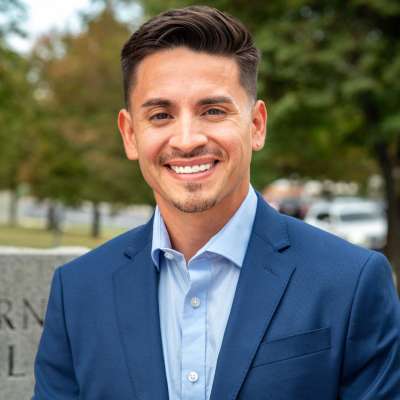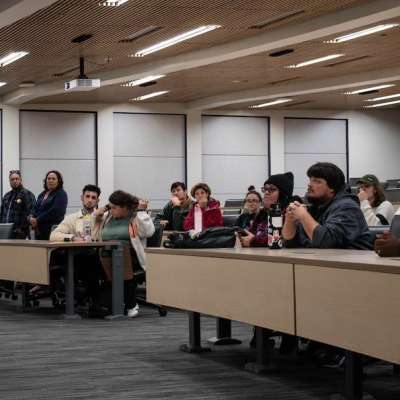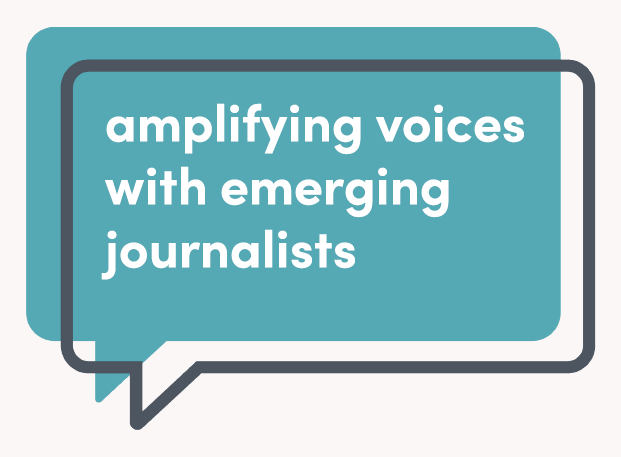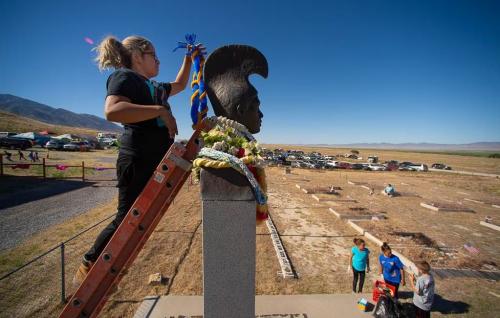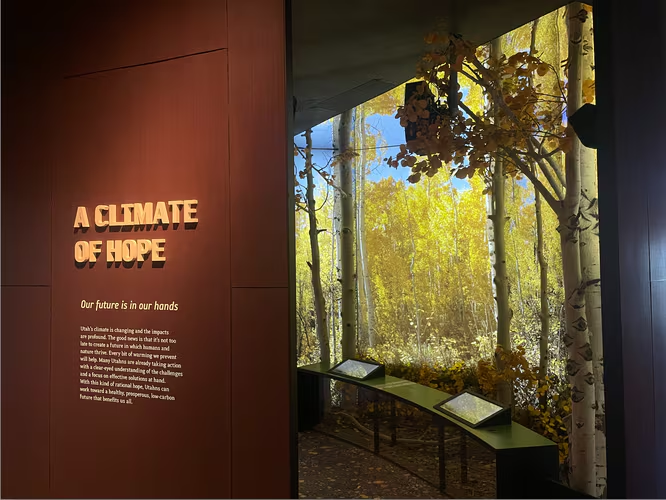An old tire shop was transformed into a bookstore just three years ago on a busy corner street in Millcreek.
The large garage windows bring in light that pours over thousands of books. Rows of tall shelves are broken up by seating areas. Old church pews sit next to the fiction novels, surrounded by hardbound classics. In the religious studies section, two chairs face each other with a chessboard sitting on an end table, waiting to be played.
Marissa’s Books holds genres from art, science, the occult, and more. It stocks used and antique books, and sells new books online.
Just inside the entrance is a display of diverse queer literature, settled around a rainbow bull. The books cover multiple facets of LGBTQ+ topics. A book on transgender history, informative books on inclusive vocabulary, queer fiction and children’s books all sit side by side, waiting for someone to come sweep them away.
“We have a whole collection of banned books,” said Cindy Dumas, owner and founder of Marissa’s Books. “The trouble is that [the list of banned titles] keeps expanding.”
In August, Utah’s Alpine School District backed away from a plan to remove 52 books from classrooms and school libraries, according to PEN America, a nonprofit group that uses the advancements in literature and human rights to defend free expression. Many of the titles considered for remove have LGBTQ+ themes, including “This One Summer” by Mariko Tamaki and “All Boys Aren’t Blue” by George M. Johnson.
Other Utah school districts also saw book bans. The Davis School District removed 33 books from shelves last November, and officials there were reviewing another 32, according to the Standard-Examiner. The Washington County School District has removed 44 titles, as of December, the St. George News reported.
In all three cases, several of the books dealt with race and gender identity.
Censorship and free speech
The removal of books from school shelves has spurred community support from Salt Lake City independent bookstore owners.
“We all have a voice, and that voice can be powerful,” said Ken Sanders, longtime owner and namesake of Ken Sanders Rare Books, which specializes in rare, antique and used books. “And independent bookstores have historically been known for vigorously opposing censorship.”
Nationwide, PEN America found that in the second half of 2022, 1,477 individual books were banned in U.S. schools, affecting 874 unique titles. That’s up 28% from the first half of 2022.
A large percentage of the books targeted are about people of color and LGBTQ+ people, PEN America found. In the second half of 2022, 30% of the unique titles were about race, racism or featured people of color — and 26% had LGBTQ+ themes or characters.
Of the books that were targeted in the Alpine School District, PEN America reported, 21 of them — or 41% — had LGBTQ+ themes or characters.
The Utah school districts that have removed books are following a law passed by the Utah Legislature in 2022. HB374 prevents “certain sensitive instructional materials” from appearing in books in public schools. According to the law, when a parent raises opposition to a title, a district committee will inspect the book’s contents and make a decision about its removal.
Dumas, at Marissa’s Books, said barring such titles keeps young readers from ideas about the world and themselves.
“How can a person tell their story when their voice is taken away?” she said.
Anne Holman, co-owner of The King’s English Bookstore, which sells all new books, said that Utah historically hasn’t been a place where books are banned. She said the rise in book bans is the fault of a few very loud, fearful people.
“Free speech is paramount,” Holman said. “Books are a safe place.”
Booksellers at The King’s English want everyone to have ready access to diverse literature, Holman said. The bookstore has a new initiative, using a “book-mobile” to bring new books to children and adults who don’t have time or access to them, she said. Through this program, participants will receive a “golden ticket,” which can be used as currency to buy books offered in the mobile store.
Representation for youth
Kerrie Baughman, who has taught English at Highland High School for 30 years, said she worries books are being challenged based on politically-charged media perceptions and not because parents understand the stories. If parents are willing to read the books they want banned, there’s room for a conversation, she said. But if they haven’t read the books, she said, “stop already.”
“[Students] need the opportunity to find something that represents their values,” said Baughman. “Especially in public education.”
Baughman said that, as a cisgender and straight white woman, she cannot always understand or connect with students who don’t see themselves represented. Kids, she said, need to be shown through example what they can become. Taking away the limited representation that exists endangers that potential.
“I wish there were more positive role models that kids could turn to and see themselves,” Baughman said. “Not always as a victim or a problem person. Because the world abounds in those good people.”
Holman said children of every age also need spaces where they can be recognized, safe, and see others like themselves. Lack of representation, she said, can alter children’s self-views, causing division and feelings of isolation.
“When you have a skewed vision of who you are, then how can you aspire to be your best self?” Holman said.
Kaitlin Mahoney, owner and founder of queer-friendly Under the Umbrella bookstore, said that if children don’t have access to representation of themselves through literature, their identities are closed off to them.
“It just leads to further marginalization, and that’s devastating,” said Mahoney.
In a 2015 Gallup poll measuring the percentage of adults who identify as part of the LGBTQ+ community in major cities in the United States, Salt Lake City was ranked seventh, at 4.7%.
Mahoney said communities need spaces that “validate and celebrate,” and that need is what made places like Under the Umbrella possible. The $56,000 initial inventory for the shop, she said, was purchased with money raised with IndieGogo, a crowd-funding app.
“From the very beginning, this has been a community effort. And right away queer people started coming here and have been coming back,” Mahoney said.
Mahoney offers a community gift card for teachers seeking to buy queer literature for their classrooms. Any customer can donate to this “card,” which will supplement educators’ purchases.
Access to information
Conversations about censorship in education, however, are far from new, according to the National Council of Teachers of English.
In 2000, the organization issued a joint statement with the International Reading Association, emphasizing that “all students in public school classrooms have the right to materials and educational experiences that promote open inquiry, critical thinking, diversity in thought and expression, and respect for others.”
Bookstore owners said they agree that information should be given in degrees. Sanders said booksellers “have long been bastions of free speech” and can combat such ignorance by simply making sure challenged and banned titles are available in their shops for people who want to find those books.
Children need access to the information that’s age-appropriate, he said, noting that kids in elementary, junior high, and high school all have different abilities to understand complicated topics.
Parents who use their personal prejudices to keep information from all children, Sanders said, are also helping independent community bookstores find new titles to stock. Not every challenged book is one Sanders may have known before, he said — so he uses the curiosity factor as a marketing tactic, with a large sign just inside his store that says “read banned books.”
“Whatever kind of censorship it is,” Sanders said, “we’ll continue to speak out, and they can’t stop us. They won’t stop us.”
When young people have access to the many ideas books present early in life, Holman said, they are able to better understand the world around them as they grow up and can make connections and put big ideas into context.
“If you give people information at an early age and you give it appropriately, it makes it so they can make better choices,” she said.
For this reason, Cindy Dumas said she won’t buy “altered” versions of banned books to sell at Marissa’s, because adapted stories compromise the integrity of what the authors are trying to say. She will, however, offer other, age-appropriate options alongside the banned books.
“Bookstores [aren’t] meant to be the parent,” she said. “We want to have all of it.”
Tyffton Bowman wrote this story as a journalism student at Salt Lake Community College. It is published as part of a new collaborative including nonprofits Amplify Utah and The Salt Lake Tribune.
###
NOTE TO MEDIA PARTNERS PUBLISHING WORK
We also request organizations include the following text either at the beginning or end of the story text :This story is jointly published by nonprofits Amplify Utah and [Your Media Organization's Name] to elevate diverse perspectives in local media through emerging journalism. Tyffton Bowman wrote this story as a journalism student at Salt Lake Community College. For more stories from Amplify Utah, visit amplifyutah.org/use-our-work.








